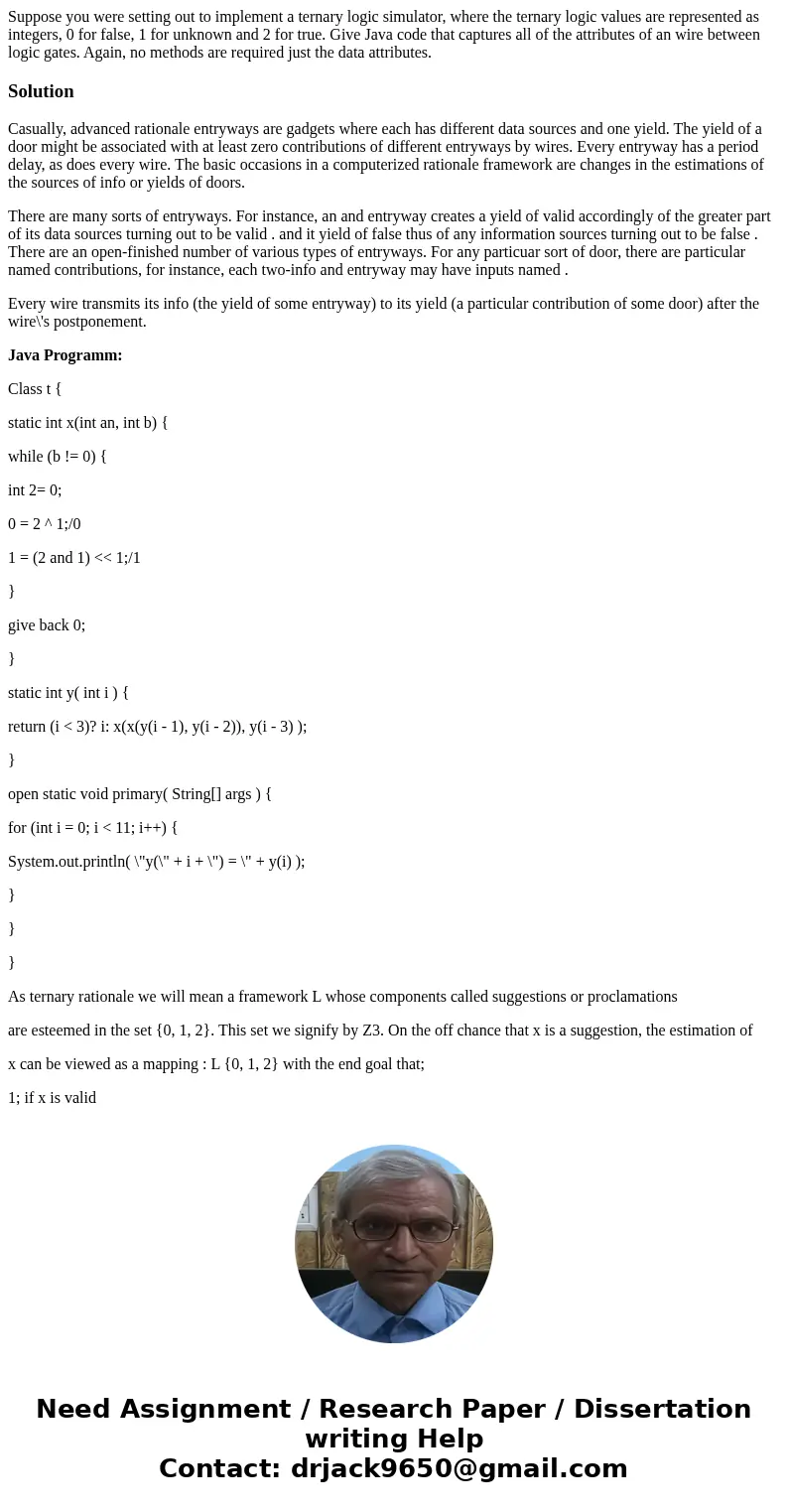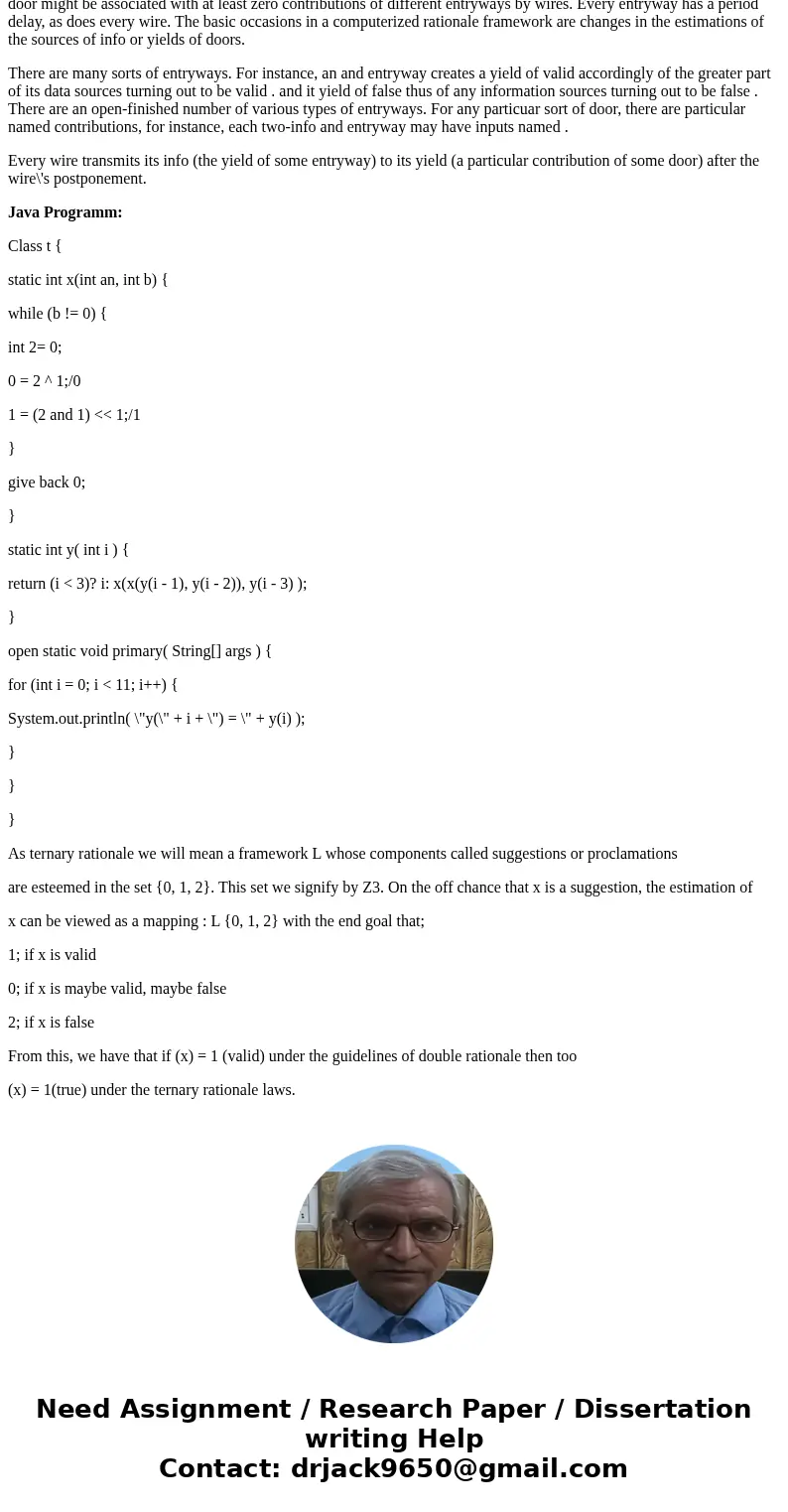Suppose you were setting out to implement a ternary logic si
Solution
Casually, advanced rationale entryways are gadgets where each has different data sources and one yield. The yield of a door might be associated with at least zero contributions of different entryways by wires. Every entryway has a period delay, as does every wire. The basic occasions in a computerized rationale framework are changes in the estimations of the sources of info or yields of doors.
There are many sorts of entryways. For instance, an and entryway creates a yield of valid accordingly of the greater part of its data sources turning out to be valid . and it yield of false thus of any information sources turning out to be false . There are an open-finished number of various types of entryways. For any particuar sort of door, there are particular named contributions, for instance, each two-info and entryway may have inputs named .
Every wire transmits its info (the yield of some entryway) to its yield (a particular contribution of some door) after the wire\'s postponement.
Java Programm:
Class t {
static int x(int an, int b) {
while (b != 0) {
int 2= 0;
0 = 2 ^ 1;/0
1 = (2 and 1) << 1;/1
}
give back 0;
}
static int y( int i ) {
return (i < 3)? i: x(x(y(i - 1), y(i - 2)), y(i - 3) );
}
open static void primary( String[] args ) {
for (int i = 0; i < 11; i++) {
System.out.println( \"y(\" + i + \") = \" + y(i) );
}
}
}
As ternary rationale we will mean a framework L whose components called suggestions or proclamations
are esteemed in the set {0, 1, 2}. This set we signify by Z3. On the off chance that x is a suggestion, the estimation of
x can be viewed as a mapping : L {0, 1, 2} with the end goal that;
1; if x is valid
0; if x is maybe valid, maybe false
2; if x is false
From this, we have that if (x) = 1 (valid) under the guidelines of double rationale then too
(x) = 1(true) under the ternary rationale laws.


 Homework Sourse
Homework Sourse